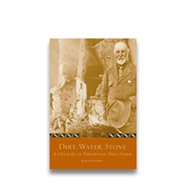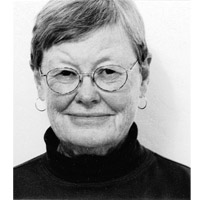Dirt, Water, Stone
A Century of Preserving
Mesa Verde
Kathleen Fiero
They stood empty for centuries, simple dwellings, small villages, and large complexes in the mesa and canyon country of what is now Southwest Colorado. The forces of weather and geology had taken their toll, but many remained remarkably intact. In the late 19th century they were explored, excavated, and plundered for the pottery, baskets, tools, and even human remains they contained. Establishment of Mesa Verde National Park was their only hope for long-term preservation, but it would be a never-ending challenge. Dirt, Water, Stone is the story of that challenge, from the earliest preservation projects to the lessons still being revealed by the cliff dwellings of Mesa Verde today.
Kathleen Fiero
Ms. Fiero grew up in northern California picking prunes and milking cows. Berkeley in the ‘60s was eye-opening, but she managed to graduate with a BA. She became an anthropologist at the University of Arizona, graduating with an MA. She spent years following her husband from Flagstaff to Santa Fe, Denver to Mesa Verde. Holding jobs as diverse as museum tech, community college instructor, and field archaeologist,
she worked for the Museum of Northern Arizona, the Laboratory of Anthropology, the Colorado Department of Transportation and the National Park Service.
At Mesa Verde she was a seasonal archaeologist in the Division of Resources for four seasons,
and then a permanent employee supervising the stabilization crew for 16 years. Just before retiring she worked two seasons at Bandelier National Monument documenting Pueblo architecture. She and her husband now live in Santa Fe and find the city very exciting, but at the same time they pine for the clear air and skies of Mesa Verde. She has written numerous technical reports on excavation and stabilization projects but is most proud of the recently published book, Balcony House: A History of a Cliff Dwelling.


![]()
![]()
